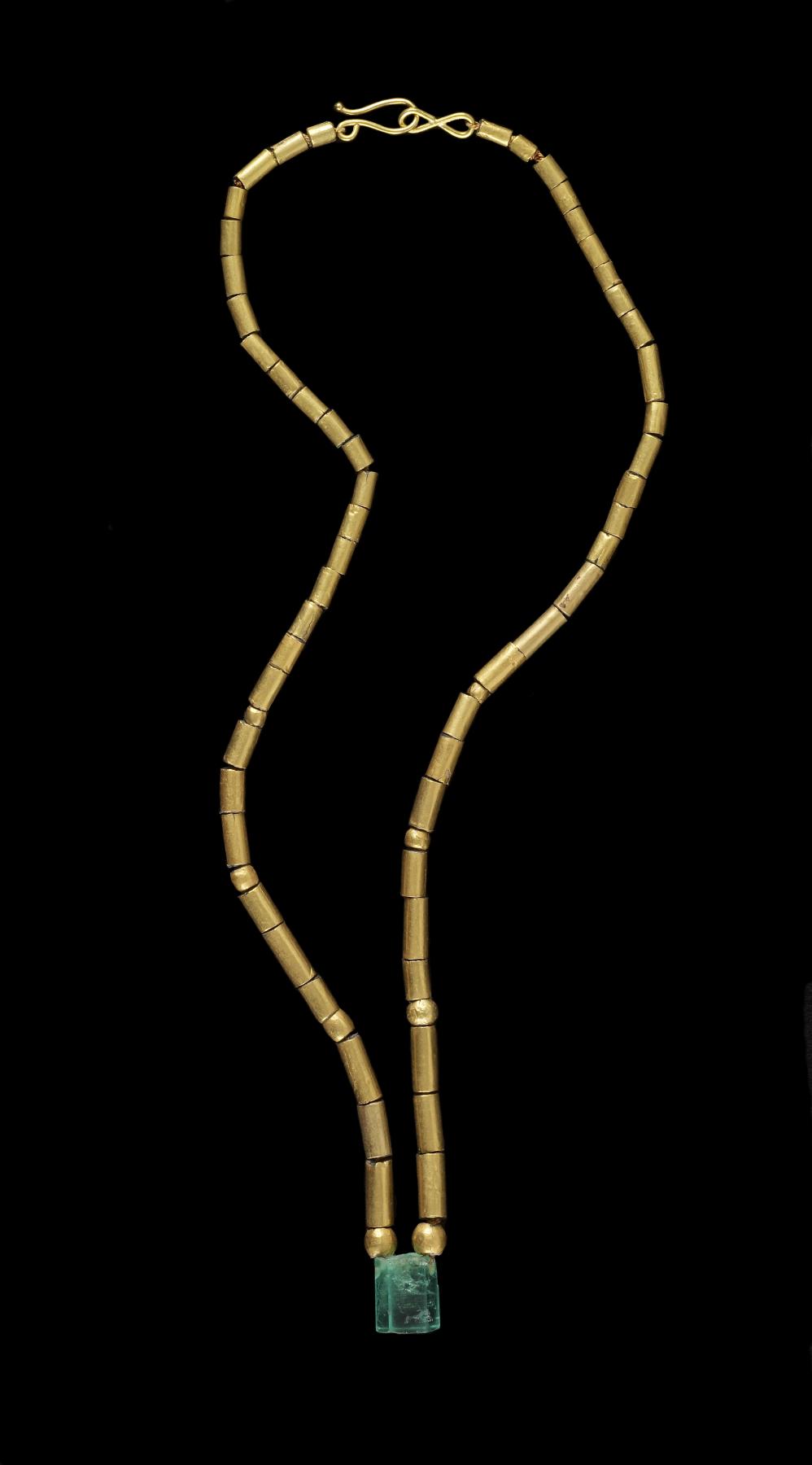Tubular Bead Necklace and Emerald Pendant
(Ancient Americas )
This necklace of gold beads and an emerald pendant was made by craftsmen of the Quimbaya culture, which flourished in what is today central Colombia. The Quimbaya were famous for their great skill in working with gold, which was abundantly available in rivers and streams on the region. This necklace shows Quimbay techniques of creating gold beads by heating gold and beating it into sheets, then cutting it into beads. The yalso included a translucent green emerald as a pendant. Such stones were mined in what is today Colombia (one province of the country is called Esmeraldas) and Ecuador. A necklace like this, including gold and a emerald, would have marked its wearer as a person of importance, such as a ruler or priest.
Provenance
Provenance (from the French provenir, 'to come from/forth') is the chronology of the ownership, custody, or location of a historical object. Learn more about provenance at the Walters.
Ron Messick Fine Arts, Santa Fe, New Mexico; purchased by John G. Bourne, between 1990 and 1999; given to Walters Art Museum, 2013.
Exhibitions
| 2015 | Gold of the Ancient Americas. The Walters Art Museum, Baltimore. |
| 2012-2013 | Exploring Art of the Ancient Americas: The John Bourne Collection Gift. The Walters Art Museum, Baltimore; Frist Center for the Visual Arts, Nashville. |
Geographies
Colombia, Middle Cauca River Valley (Place of Origin)
Measurements
L of chain: 21 1/16 in. (53.5 cm); Pendant H: 9/16 x W: 1/2 x D: 3/8 in. (1.4 x 1.2 x 0.9 cm)
Credit Line
Gift of John G. Bourne, 2013
Location in Museum
Not on view
Accession Number
In libraries, galleries, museums, and archives, an accession number is a unique identifier assigned to each object in the collection.
In libraries, galleries, museums, and archives, an accession number is a unique identifier assigned to each object in the collection.
2009.20.75


